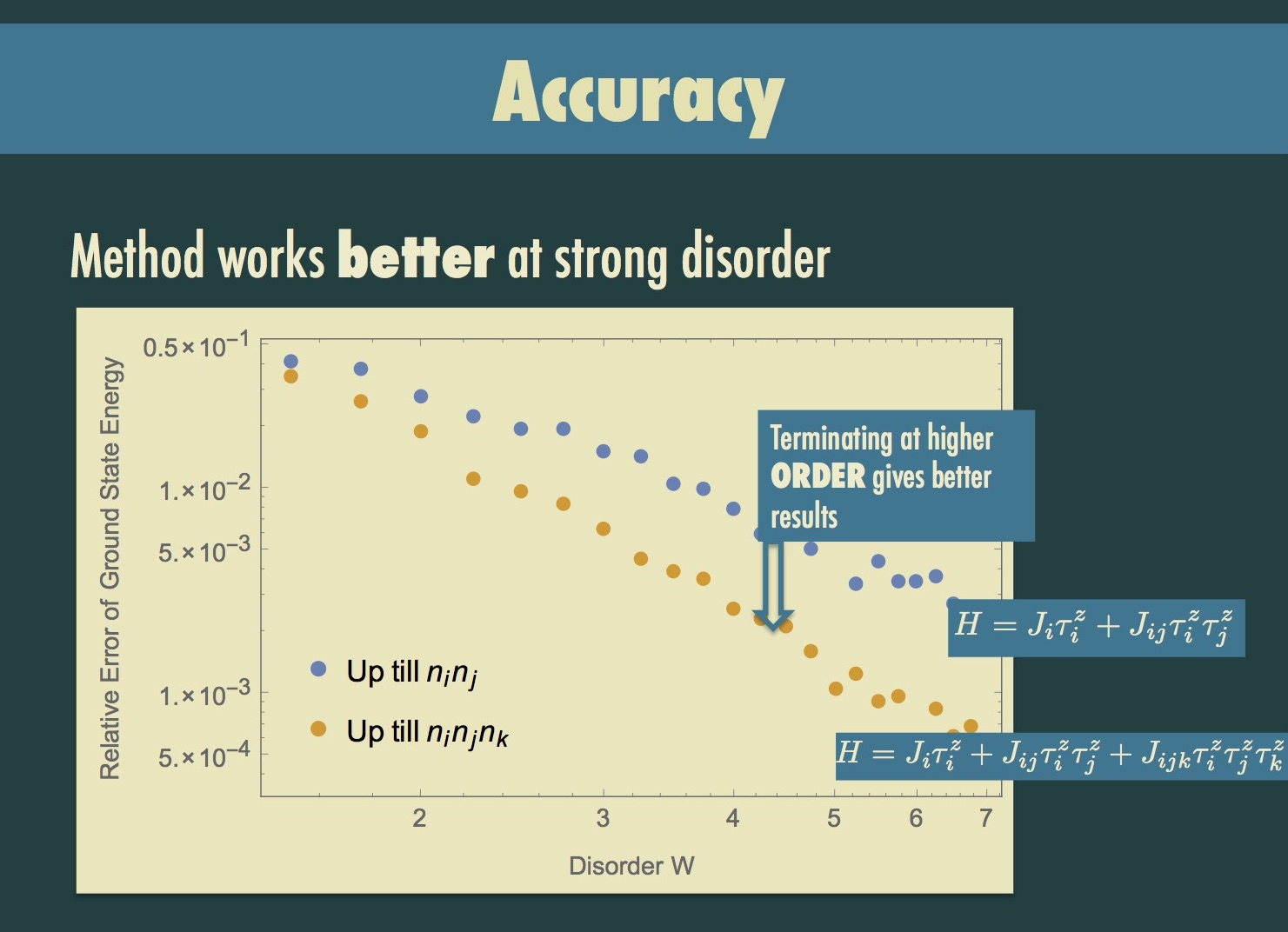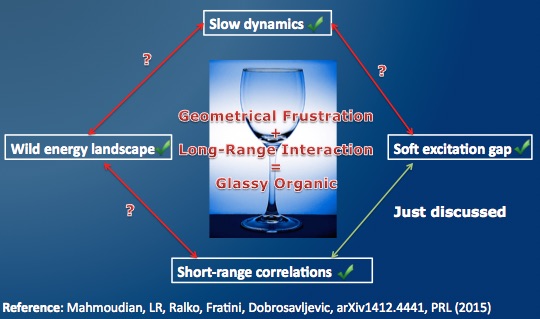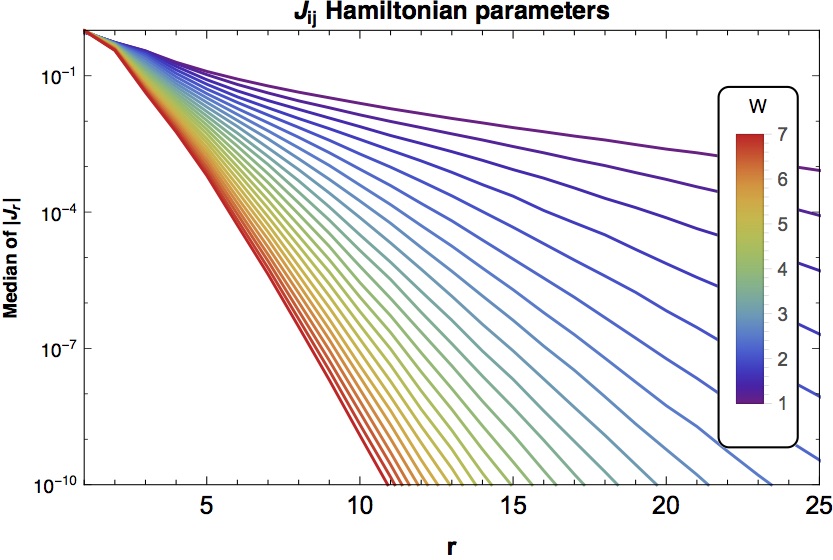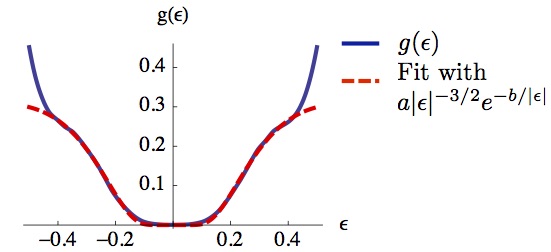Title: Phonon linewidth due to electron-phonon interactions with strong forward scattering in FeSe thin films on oxide substrates
Authors: Yan Wang, Louk Rademaker, Elbio Dagotto, Steven Johnston
Abstract: The discovery of an enhanced superconducting transition temperature Tc in monolayers of FeSe grown on several oxide substrates has opened a new route to high-Tc superconductivity through interface engineering. One proposal for the origin of the observed enhancement is an electron-phonon (e-ph) interaction across the interface that peaked at small momentum transfers. In this paper, we examine the implications of such a coupling on the phononic properties of the system. We show that a strong forward scattering leads to a sizable broadening of phonon lineshape, which may result in charge instabilities at long-wavelengths. However, we further find that the inclusion of Coulombic screening significantly reduces the phonon broadening. Our results show that one might not expect anomalously broad phonon linewidths in the FeSe interface systems, despite the fact that the e-ph interaction has a strong peak in the forward scattering (small q) direction.
Many-body localization and delocalization from the perspective of Integrals of Motion
Title: Many-body localization and delocalization from the perspective of Integrals of Motion
Louk Rademaker, Miguel Ortuno, Andres M. Somoza
Abstract: We study many-body localization (MBL) and delocalization from the perspective of integrals of motion (IOMs). MBL can be understood phenomenologically through the existence of macroscopically many localized IOMs. However, IOMs exist for all many-body systems, and non-localized IOMs determine properties on the ergodic side of the MBL transition too. Here we explore their properties using our method of displacement transformations. We show how different quantities can be calculated using the IOMs as an expansion in the number of operators. For all values of disorder the typical IOMs are localized, suggesting the importance of rare fluctuations in understanding the delocalization transition.
MBL-to-Ergodic Transition from the perspective of Integrals of Motion
At the 16th International Conference on Transport in Interacting Disordered Systems (TIDS16) in Granada, Spain I presented my work done with Miguel Ortuño and Andres Somoza on many-body localization (MBL). Specifically, these are the first large-system results using our method of displacement transformations to find the MBL integrals of motion.
A sneak peek: the accuracy of our method increases order by order and with increasing disorder. Download the full presentation as a pptx file (4.5 MB)

Absence of Marginal Stability in Self-Generated Coulomb Glasses
Title: Absence of Marginal Stability in Self-Generated Coulomb Glasses
Louk Rademaker, Zohar Nussinov, Leon Balents, Vladimir Dobrosavljevic
Abstract: We investigate the structure of metastable states in self-generated Coulomb glasses. In dramatic contrast to disordered electron glasses, we find that these states lack marginal stability. Such absence of marginal stability is reflected by the suppression of the single-particle density of states into an exponentially soft gap of the form $g(\epsilon) \sim |\epsilon|^{-3/2} e^{-V / \xi |\epsilon|}$.
To analytically explain this behavior, we extend the stability criterion of Efros and Shklovskii to incorporate local charge correlations, in quantitative agreement with our numerical findings.
Our work suggests the existence of a new class of self-generated glasses dominated by strong geometric frustration.
APS March Meeting talk on glasses
At the APS March Meeting 2016 in Baltimore I was giving an invited talk, with the title ‘New theoretical tools for quantum glasses, with and without quenched disorder’ (that’s talk F13.01). Now the APS allowed me to upload the slides and everything on their website, so if you missed the talk, please find the info here: https://absuploads.aps.org/presentation.cfm?pid=11532
Aspects of forward scattering in FeSe thin films
Last year we showed that you get ridiculously high superconducting temperatures if the electron-phonon coupling is strongly peaked around zero momentum transfer, so-called forward scattering. While the paper from that time is just accepted in the New Journal of Physics, we came up with a new paper discussing many of the more subtle details – for example about the vertex corrections, quasiparticle interference and gap structure. This week on the arXiv!
(PS: I’ve updated the publication list, a lot of things from last year are now peer-reviewed published somewhere, such as our MBL-paper in Physical Review Letters, or the topological classification in Phys. Rev. B!)
Title: Aspects of electron-phonon interactions with strong forward scattering in FeSe Thin Films on SrTiO3 substrates
Y. Wang, K. Nakatsukasa, L. Rademaker, T. Berlijn, and S. Johnston
Abstract: Mono- and multilayer FeSe thin films grown on SrTiO3 and BiTiO3 substrates exhibit a greatly enhanced superconductivity over that found in bulk FeSe. A number of proposals have been advanced for the mechanism of this enhancement. One possibility is the introduction of a cross-interface electron- phonon (e-ph) interaction between the FeSe electrons and oxygen phonons in the substrates that is peaked in the forward scattering (small q) direction due to the two-dimensional nature of the interface system. Motivated by this, we explore the consequences of such an interaction on the superconducting state and electronic structure of a two-dimensional system using Migdal-Eliashberg theory. This interaction produces not only deviations from the expectations of conventional phonon-mediated pairing but also replica structures in the spectral function and density of states, as probed by angle-resolved photoemission spectroscopy, scanning tunneling microscopy/spectroscopy, and quasi-particle interference imaging. We also discuss the applicability of Migdal-Eliashberg theory for a situation where the e-ph interaction is peaked at small momentum transfer and in the FeSe/STO system.
Presentation: Integrals of Motion with Displacement Transformations
 At the KITP conference ‘KITP Conference: Aspects and applications of many-body localization‘ from 16 to 20 November, here in Santa Barbara, my collaborator Miguel Ortuño gave a presentation about the work we have been doing together on MBL.
At the KITP conference ‘KITP Conference: Aspects and applications of many-body localization‘ from 16 to 20 November, here in Santa Barbara, my collaborator Miguel Ortuño gave a presentation about the work we have been doing together on MBL.
You can watch the talk on the website of the KITP: http://online.kitp.ucsb.edu/online/mbl-c15/ortuno/
The slides of the presentation can be downloaded here, and the paper that explains our work in more detail is currently on the arXiv.
Quantum Critical Matter and Phase Transitions in Rare-Earths and Actinides
Today I finished a review paper, together with John Mydosh from Leiden University, about quantum criticality in heavy fermion materials. It will be published (after editing and such) in the Handbook of Chemistry and Physics of Rare Earths and Actinides. Unfortunately, the Elsevier policies do not allow me to put it on arXiv, only on my personal webpage.
Abstract: In this Chapter we discuss quantum critically, the notion that properties of a material are governed by the existence of a phase transition at zero temperature. The point where a second-order (continuous) phase transition takes places is known as a quantum critical point (QCP). Materials that exhibit a quantum critical points can be tuned through their quantum phase transition by, for example, pressure, chemical doping or disorder, frustration, and magnetic field. The study of quantum phase transitions (QPT) was initially theoretically driven, showing that high- temperature properties of a material with a QPT are directly influenced by the properties of the QCP itself. We start this Chapter by discussing the predictions of quantum critical and Hertz- Millis theory. Experimentally, we will mainly limit ourselves to f-electron based materials: the rare-earths Li(Ho,Y)F4, Ce(Cu,Au)6, YbRh2Si2, the Cerium series Ce(Co, Rh; Ir)In5 and one actinide based material, URu2Si2. These ‘heavy fermion’ metals (4f or 5f) represent prototype materials of quantum critical matter, and we will critically review their experimental signatures and their evolving theoretical descriptions. We conclude with other manifestations of quantum phase transitions beyond the rare-earths and actinides.
Youtube talk: Glassy dynamics
On June 30, 2015, I gave a talk at the SPICE-Workshop on Bad Metal Behavior in Mott Systems in Mainz – you can find the slides and more details about the workshop itself here.
The talk has been published online, available on Youtube:
Presentation: Glassy dynamics in geometrically frustrated Coulomb liquids
 At the SPICE-Workshop on Bad Metal Behavior in Mott Systems (June 29-July 2 2015) in Mainz, Germany, I was invited speaker. I gave a talk about glassy dynamics in theta-RbZn, the organic material that upon fast-cooling can avoid the charge ordering transition and gets into a disorderfree electron glass phase. At the hand of four characteristics of a glass – slow dynamics, a soft gap, short-range correlations and a rugged energy landscape – I discuss the results of our model of hoppings electrons with long-range Coulomb repulsion.
At the SPICE-Workshop on Bad Metal Behavior in Mott Systems (June 29-July 2 2015) in Mainz, Germany, I was invited speaker. I gave a talk about glassy dynamics in theta-RbZn, the organic material that upon fast-cooling can avoid the charge ordering transition and gets into a disorderfree electron glass phase. At the hand of four characteristics of a glass – slow dynamics, a soft gap, short-range correlations and a rugged energy landscape – I discuss the results of our model of hoppings electrons with long-range Coulomb repulsion.
You can download the presentation here (pdf, 10 MB).
The talk has been posted on Youtube: click here to watch it!



